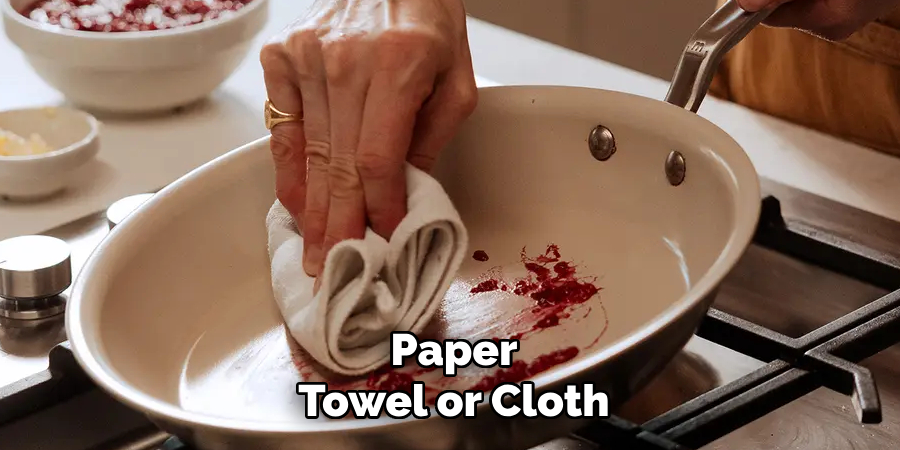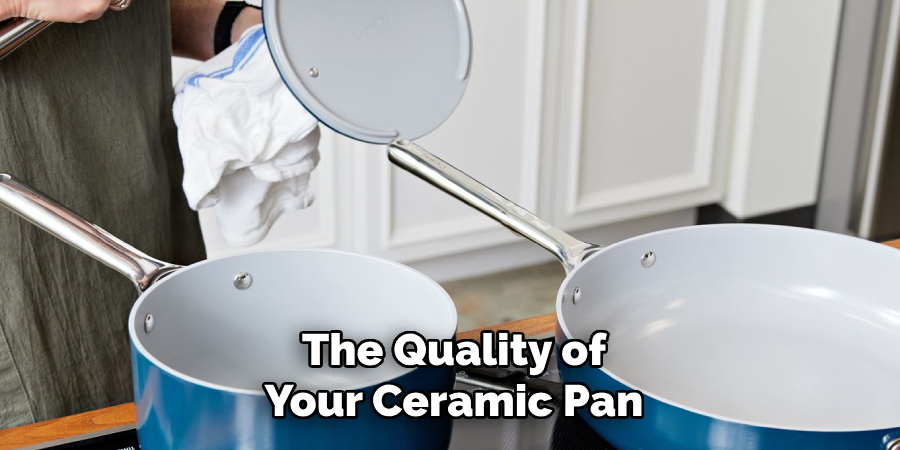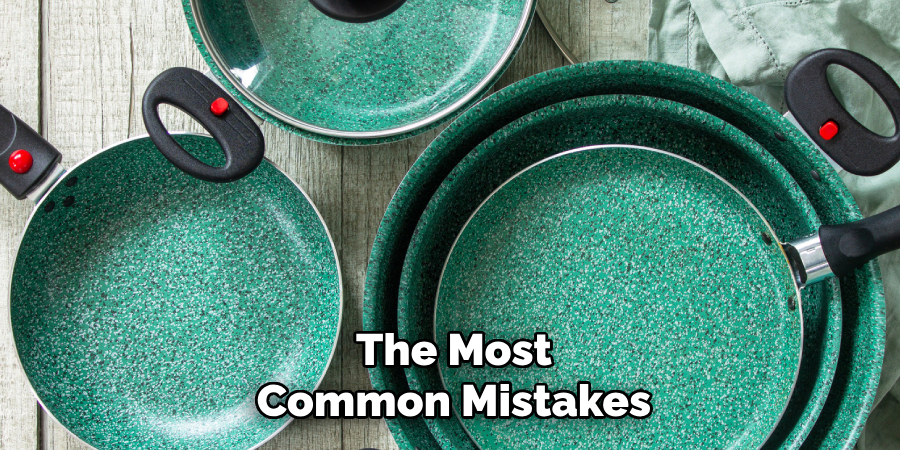Thanks to their nonstick properties and sleek, modern appearance, ceramic pans have become popular in kitchens worldwide. These innovative cookware options feature a ceramic coating that offers a safer alternative to traditional nonstick surfaces, which often contain chemicals like PTFE and PFOA.
Ceramic pans are non-toxic, provide even heat distribution for consistent cooking results, and are remarkably easy to clean. Whether you are frying, sautéing, or simmering, ceramic pans can elevate your cooking experience while prioritizing health and safety.

This article will serve as a comprehensive guide on how to use a ceramic pan effectively. From preparation and maintenance to best practices during cooking, you will learn everything you need to know to maximize the lifespan and performance of your ceramic cookware. Let’s explore why ceramic pans are a must-have addition to your kitchen.
Understanding Ceramic Pans
What Is a Ceramic Pan?
A ceramic pan is a type of cookware that features a metal base coated with a layer of ceramic material, creating a smooth and nonstick surface. The ceramic coating is typically derived from natural minerals, making it a popular choice among health-conscious cooks. Thanks to its nonstick properties, ceramic pans allow for cooking with little to no oil, ensuring healthier meal preparation.
Types of Ceramic Pans
There are two main types of ceramic pans available:
- Fully Ceramic Pans
These pans are made entirely from ceramic material, often baked and glazed clay. They are known for their excellent heat retention and even cooking surface,, but can be more fragile and prone to breaking.
- Ceramic-Coated Metal Pans
These pans have a metal base, usually aluminum or stainless steel, coated with a layer of ceramic material. They are lightweight, durable, and heat up quickly, making them suitable for everyday cooking.
Both types have their strengths, and selecting one depends on your cooking needs and preferences.
Advantages of Ceramic Pans Over Other Cookware
Ceramic pans hold several advantages over traditional nonstick or metal cookware. Firstly, unlike some PTFE-based coatings, they provide a healthier nonstick alternative since they do not release toxic fumes when overheated. Furthermore, their surfaces are easy to clean, often requiring a gentle scrub. These attributes make ceramic pans a convenient and safe addition to any kitchen.
Preparing a Ceramic Pan for First Use
Properly preparing a ceramic pan before its initial use ensures durability and enhances its performance. Follow these steps to get your ceramic pan ready for action:
Step 1: Washing Before First Use
Begin by thoroughly washing the ceramic pan with warm, soapy water. This step removes any manufacturing residues or dust accumulated during packaging. Use a soft sponge or cloth for gentle cleaning to avoid scratching the surface. Once washed, rinse the pan thoroughly and dry it using a soft towel.
Step 2: Seasoning the Pan (Optional but Recommended)
While not mandatory, seasoning your ceramic pan is a helpful practice to improve its nonstick capabilities further and extend the lifespan of the coating. To do this, lightly coat the pan’s surface with a thin layer of vegetable or avocado oil. Place the pan on low heat for a few minutes to allow the oil to bond with the ceramic surface.
After heating, use a paper towel or cloth to remove excess oil. This process creates a smoother cooking surface and reinforces the natural nonstick properties of the pan, ensuring an enjoyable cooking experience.

How to Use a Ceramic Pan: Cook with a Ceramic Pan
Cooking with a ceramic pan is simple and enjoyable when done correctly. By following a few key steps, you can ensure the longevity of your pan and the best possible cooking results.
Step 1: Using the Right Heat Setting
Always cook on low to medium heat to prevent damage to the ceramic coating. High heat can cause the nonstick surface to wear down over time, reducing its effectiveness. Ceramic pans heat efficiently, so there’s no need to expose them to extreme temperatures.
Step 2: Choosing the Right Cooking Oils
Select oils with a high smoke point, such as avocado oil or grapeseed oil, to complement your ceramic pan. These oils provide superior performance and won’t degrade as quickly under heat. Avoid aerosol cooking sprays, as they can leave a sticky residue on the pan’s surface, which is difficult to remove and may affect its nonstick properties.
Step 3: Cooking Techniques for Best Results
Begin by preheating your ceramic pan on low to medium heat for a more even cooking experience. Preheating ensures food cooks evenly without sticking to the surface.
When adding ingredients, avoid overcrowding the pan to maintain a consistent temperature and prevent uneven cooking. Use wooden or silicone utensils to stir and flip your food gently to protect the ceramic coating from scratches and chips. With these techniques, you’ll enjoy perfectly cooked meals while extending the lifespan of your ceramic pan.
Proper Cleaning and Maintenance
Step 1: Cleaning After Every Use
Once you’ve finished cooking, allow your ceramic pan to cool completely before washing. This prevents thermal shock, which can damage the ceramic coating. Use warm, soapy water and a soft sponge to clean the pan gently. Avoid scrubbing aggressively, as this could compromise the finish. After cleaning, rinse thoroughly to remove all soap residue and dry the pan immediately with a soft cloth to prevent water spots.
Step 2: Removing Stubborn Residue
For tougher stains or stuck-on food, soak the pan in warm water mixed with a small amount of baking soda. Allow it to sit for about 15 minutes to loosen any residue. Then, use a non-abrasive scrubber, such as a nylon or silicone pad, to gently lift the residue without scratching the surface. Repeat as needed for more challenging spots, always being careful to avoid any damage to the ceramic coating.
Step 3: Avoiding Damage During Cleaning

To preserve the quality of your ceramic pan, avoid using steel wool, metal scrubbers, or harsh detergents, as they can scratch or wear down the ceramic layer. Even if your pan is labeled as dishwasher-safe, it’s generally better to wash it by hand to extend its lifespan. Dishwashers expose the pan to high heat and harsh detergents, which can deteriorate the coating over time. Proper cleaning practices will ensure your ceramic cookware remains in excellent condition for years to come.
Storage Tips to Prolong the Lifespan
Proper Storage Methods
To ensure the longevity of your ceramic pan, store it in a cool, dry place to avoid moisture buildup, which can lead to corrosion or damage to the pan’s surface. It’s essential to avoid stacking heavier cookware directly on top of your ceramic pan, as this can cause scratches or chips in the coating. Instead, find a designated space where your pan can rest securely without unnecessary pressure or contact with other kitchen items.
Using Protective Liners
If stacking pans is unavoidable due to limited storage space, consider using protective liners such as soft cloths, silicone mats, or even paper towels. Placing a liner between stacked pans helps prevent surface damage by reducing friction and pressure on the ceramic coating.
This simple step can make a significant difference in maintaining the quality and appearance of your cookware. Additionally, keeping the cooking surface intact ensures even heat distribution and extends the usability of your ceramic pan for years to come. Proper storage practices are just as critical as proper cleaning in preserving the full lifespan of your ceramic cookware.
Common Mistakes to Avoid
Overheating the Pan

Excessive heat is one of the most common mistakes when using ceramic cookware. While these pans are designed to provide even heat distribution, subjecting them to extremely high temperatures can weaken the nonstick surface. This diminishes the pan’s performance and increases the likelihood of food sticking during cooking. Always cook on low to medium heat to protect the pan and achieve the best results.
Using Metal Utensils
Metal utensils can cause scratches and abrasions on the delicate ceramic coating. Over time, these scratches can compromise the nonstick properties, making cooking and cleaning more challenging. Instead, opt for utensils made of wood, silicone, or nylon, which are gentle on the pan’s surface and help preserve its quality.
Cooking Without Oil
Although ceramic pans are designed to be nonstick, using a small amount of oil or butter can enhance their performance and extend their lifespan. Cooking without any fat can lead to food sticking over time and may strain the nonstick surface, making it less effective.
Washing While Hot
Rinsing a ceramic pan immediately after use, while it is still hot, can expose it to rapid temperature changes, potentially causing cracks or warping. Allow the pan to cool down completely before washing it with lukewarm water and mild detergent. This practice ensures the pan retains its structure and integrity over the long term.

Conclusion
Understanding how to use a ceramic pan properly ensures it remains a reliable companion in your kitchen for years to come. Key practices include using moderate heat, employing gentle cooking techniques, and maintaining regular care. Avoid harsh cleaners, metal utensils, and extreme temperatures to prevent damage to the pan’s nonstick surface and overall structure.
Always allow the pan to cool before washing, and opt for silicone or wooden utensils to preserve its coating. Treating your ceramic pan with care and attention allows you to maximize its performance and enjoy hassle-free cooking for a long time.
Professional Focus
Harry Ciotti is a highly skilled kiln operator with a sharp eye for detail and an in-depth understanding of the firing process. His expertise ensures that each ceramic piece reaches its full potential, perfectly balancing strength and beauty. Harry takes pride in overseeing the final stage of pottery creation, transforming raw clay into durable and stunning works of art.
About the Author
Harry Ciotti is a dedicated kiln operator and ceramic artist who brings passion and precision to every piece he fires. With a deep commitment to craftsmanship, Harry ensures that every ceramic creation is fired to perfection, from delicate vases to robust sculptures. He not only operates the kiln, but understands the unique needs of each piece, ensuring it reaches its full artistic potential. Through his work, Harry blends precision with artistry, making every firing a story of transformation.
Education History
University: California College of the Arts
Degree: Master of Fine Arts in Ceramics
Harry’s advanced education in ceramics has refined his technical skills, particularly in kiln operation, firing processes, and ceramic artistry. His educational background equips him to produce top-quality ceramic pieces that reflect both technical excellence and artistic expression.
Expertise:
- Kiln Operation and Firing Techniques
- Ceramics Creation (Functional and Artistic)
- Precision Craftsmanship
- Glazing and Texture Techniques
- Ceramic Artistry and Storytelling
